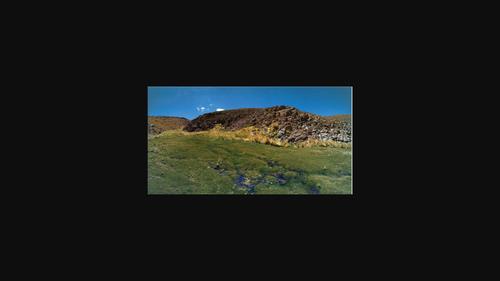当前位置:
X-MOL 学术
›
WIREs Water
›
论文详情
Our official English website, www.x-mol.net, welcomes your feedback! (Note: you will need to create a separate account there.)
The Quebrada Negra wetland study: An approach to understand plant diversity, hydrology, and hydrogeology of high-Andean wetlands
WIREs Water ( IF 8.2 ) Pub Date : 2023-08-16 , DOI: 10.1002/wat2.1683 Francisco Suárez 1, 2, 3, 4 , Andrés Sarabia 1 , Pedro Sanzana 1 , Claudio Latorre 5 , José F. Muñoz 1, 4
WIREs Water ( IF 8.2 ) Pub Date : 2023-08-16 , DOI: 10.1002/wat2.1683 Francisco Suárez 1, 2, 3, 4 , Andrés Sarabia 1 , Pedro Sanzana 1 , Claudio Latorre 5 , José F. Muñoz 1, 4
Affiliation

|
High-Andean peatlands are high-altitude wetland ecosystems found throughout the arid central Andes of South America. They form through the establishment of specialized grasses and cushion sedges that are well-adapted to cold temperatures, in areas where groundwater emerges. The Silala River is a groundwater-fed high-Andean fluvial system, which emerges in various springs that generate wetlands, the Cajones and Orientales (Bolivia), the river's headwater sources, and the Quebrada Negra (Chile) being the most important. This article reviews detailed monitoring undertaken in the undisturbed Quebrada Negra wetland to provide insights into wetland processes, and to compare its functioning to that of the Bolivian wetlands, which were channelized a century ago. Vegetation composition was found to be similar among the three wetlands, and their spatiotemporal vegetation cover distribution showed strong seasonal and interannual variability. The channelized Bolivian wetlands have the highest annual actual evapotranspiration values (~700 mm, due to their higher vegetation vigor), as estimated using remote sensing, ~10% greater than that obtained in the undisturbed Quebrada Negra wetland. For the Quebrada Negra wetland, groundwater monitoring revealed that hydraulic head contours are consistent with the topography, although water sources to the wetland are complex to identify. While significant groundwater inflows arise at the wetland edges, upwelling and downwelling conditions are observed at various locations within the wetland, similar to other high-Andean wetlands. The observations suggest that while the underlying groundwater discharge sustains the saturated conditions of the wetland, the spatial variability of groundwater inputs results in a negligible impact of channelization on wetland evapotranspiration.
中文翻译:

克布拉达内格拉湿地研究:了解安第斯高地湿地植物多样性、水文和水文地质的方法
高安第斯泥炭地是遍布南美洲干旱的安第斯山脉中部的高海拔湿地生态系统。它们是通过在地下水出现的地区种植特别适合寒冷气温的草和垫莎草而形成的。锡拉拉河是一个由地下水供给的高安第斯河流系统,出现在形成湿地的各种泉水中,其中卡霍内斯河和东方河(玻利维亚)是该河的源头,而克夫拉达内格拉河(智利)是最重要的。本文回顾了在未受干扰的克布拉达内格拉湿地进行的详细监测,以深入了解湿地过程,并将其功能与一个世纪前疏导的玻利维亚湿地的功能进行比较。三个湿地的植被组成相似,其时空植被覆盖分布表现出强烈的季节和年际变化。根据遥感估计,玻利维亚渠道化湿地的年实际蒸散发值最高(约 700 毫米,因为植被活力较高),比未受干扰的克布拉达内格拉湿地高约 10%。对于克夫拉达内格拉湿地,地下水监测显示水头轮廓与地形一致,尽管湿地的水源很难识别。虽然湿地边缘出现大量地下水流入,但与其他高安第斯湿地类似,在湿地内的各个位置都观察到上升流和下降流条件。观察结果表明,虽然底层地下水排放维持了湿地的饱和条件,但地下水输入的空间变化导致渠道化对湿地蒸散的影响可以忽略不计。
更新日期:2023-08-16
中文翻译:

克布拉达内格拉湿地研究:了解安第斯高地湿地植物多样性、水文和水文地质的方法
高安第斯泥炭地是遍布南美洲干旱的安第斯山脉中部的高海拔湿地生态系统。它们是通过在地下水出现的地区种植特别适合寒冷气温的草和垫莎草而形成的。锡拉拉河是一个由地下水供给的高安第斯河流系统,出现在形成湿地的各种泉水中,其中卡霍内斯河和东方河(玻利维亚)是该河的源头,而克夫拉达内格拉河(智利)是最重要的。本文回顾了在未受干扰的克布拉达内格拉湿地进行的详细监测,以深入了解湿地过程,并将其功能与一个世纪前疏导的玻利维亚湿地的功能进行比较。三个湿地的植被组成相似,其时空植被覆盖分布表现出强烈的季节和年际变化。根据遥感估计,玻利维亚渠道化湿地的年实际蒸散发值最高(约 700 毫米,因为植被活力较高),比未受干扰的克布拉达内格拉湿地高约 10%。对于克夫拉达内格拉湿地,地下水监测显示水头轮廓与地形一致,尽管湿地的水源很难识别。虽然湿地边缘出现大量地下水流入,但与其他高安第斯湿地类似,在湿地内的各个位置都观察到上升流和下降流条件。观察结果表明,虽然底层地下水排放维持了湿地的饱和条件,但地下水输入的空间变化导致渠道化对湿地蒸散的影响可以忽略不计。



























 京公网安备 11010802027423号
京公网安备 11010802027423号